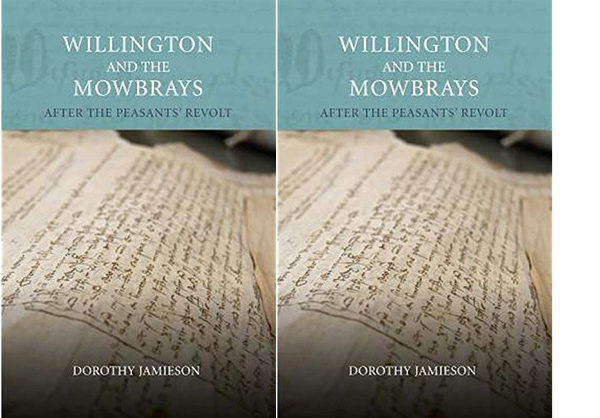Willington and the Mowbrays: After the Peasants’ Revolt

Willington and the Mowbrays: After the Peasants’ Revolt, Dorothy Jamieson, Bedford Historical Record Society Vol 95, Boydell Press, 2019, 241p, £25-00, ISSN 0067-4826.
At one level this scholarly and meticulous study introduces us to the Willington neighbourhood in Bedfordshire. Based on Dorothy Jamieson’s careful transcription of its manorial court rolls, she guides us through a multiplicity of village experiences in the period after the Black Death when England began to evolve from its medieval feudal framework into the more sophisticated economic model which followed.
The intricacies of local life are revealed, from agricultural organisation and production, to local crafts and business activity, to local criminality and how ordinary people spent their lives. This is carefully composed but at that point one would have to recognise that the people of Willington and their interactions with the Mowbray family were not dissimilar to the experiences of others in many contemporaneous English villages.
However, if one explores the text carefully, it is possible to identify evidence which has a much wider currency. Early sporting evidence is extremely valuable when it occurs. It will be fragmentary but the accumulation of such local evidence adds to the wider appreciation of how sport emerged in this relatively early period. In October 1467 punishment was to be imposed on anyone in Willington over the age of 12 who played tennis, with the exception of Christmas Day. Adults were liable for fines of 40d and overnight imprisonment for disobedience of this order. In 1473 several men were actually fined for playing tennis, so we know that this was really happening at this very early date.
There was already a pattern of games playing in Willington because in October 1397 it was ordered that ‘no-one shall play the game called quoyte in the future, under a penalty of 12d’. The historical reality is that the imposition of fines, whether for playing quoits or tennis, is a good indication that these villagers were participating in what we would now describe as sport.
These very specific illustrations reminds us that sources such as this can reveal useful evidence to specialist historians with various backgrounds. These isolated examples, drawn together, can improve our understanding of how people lived their lives in very specific ways half a millennium ago.

